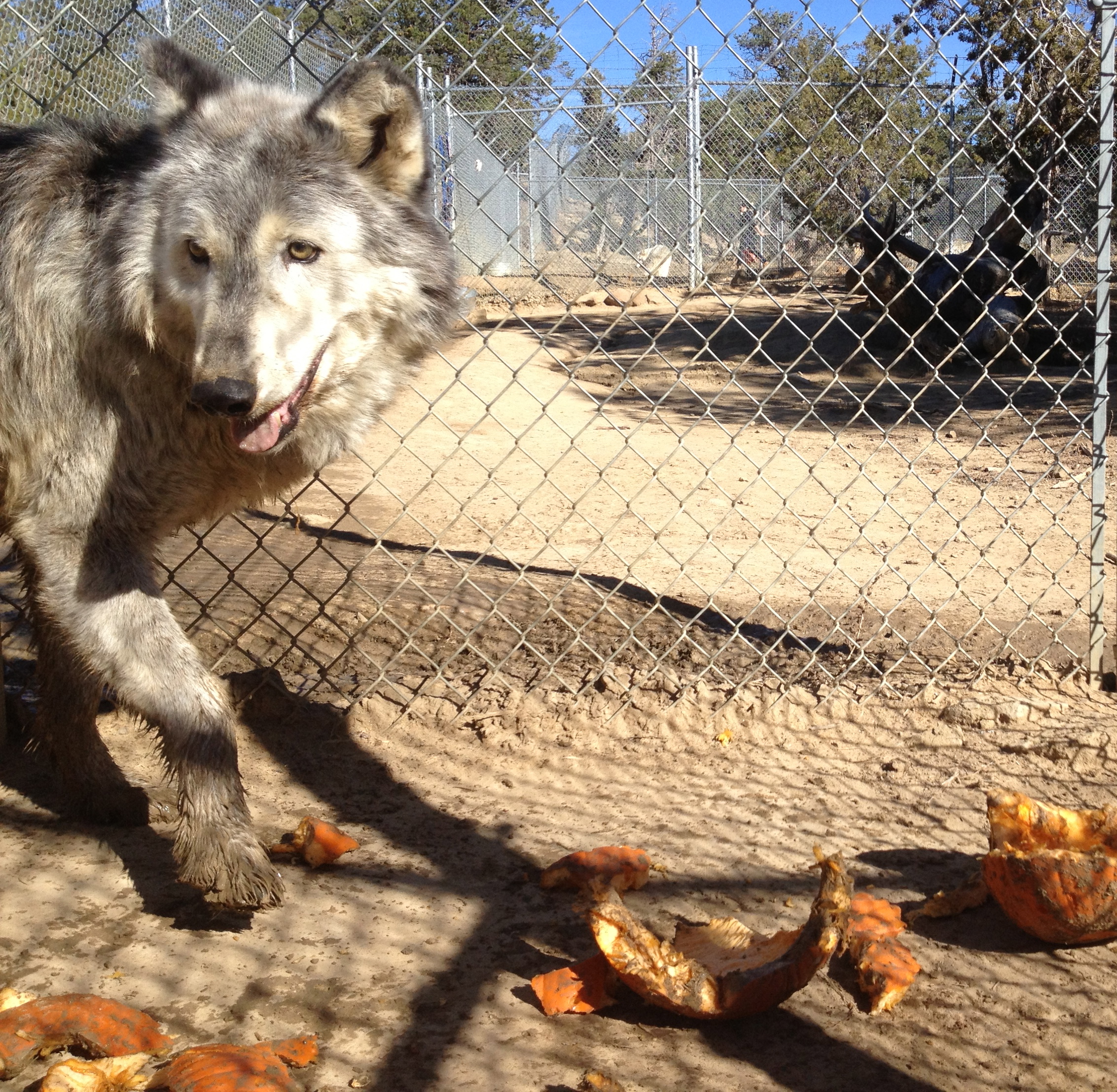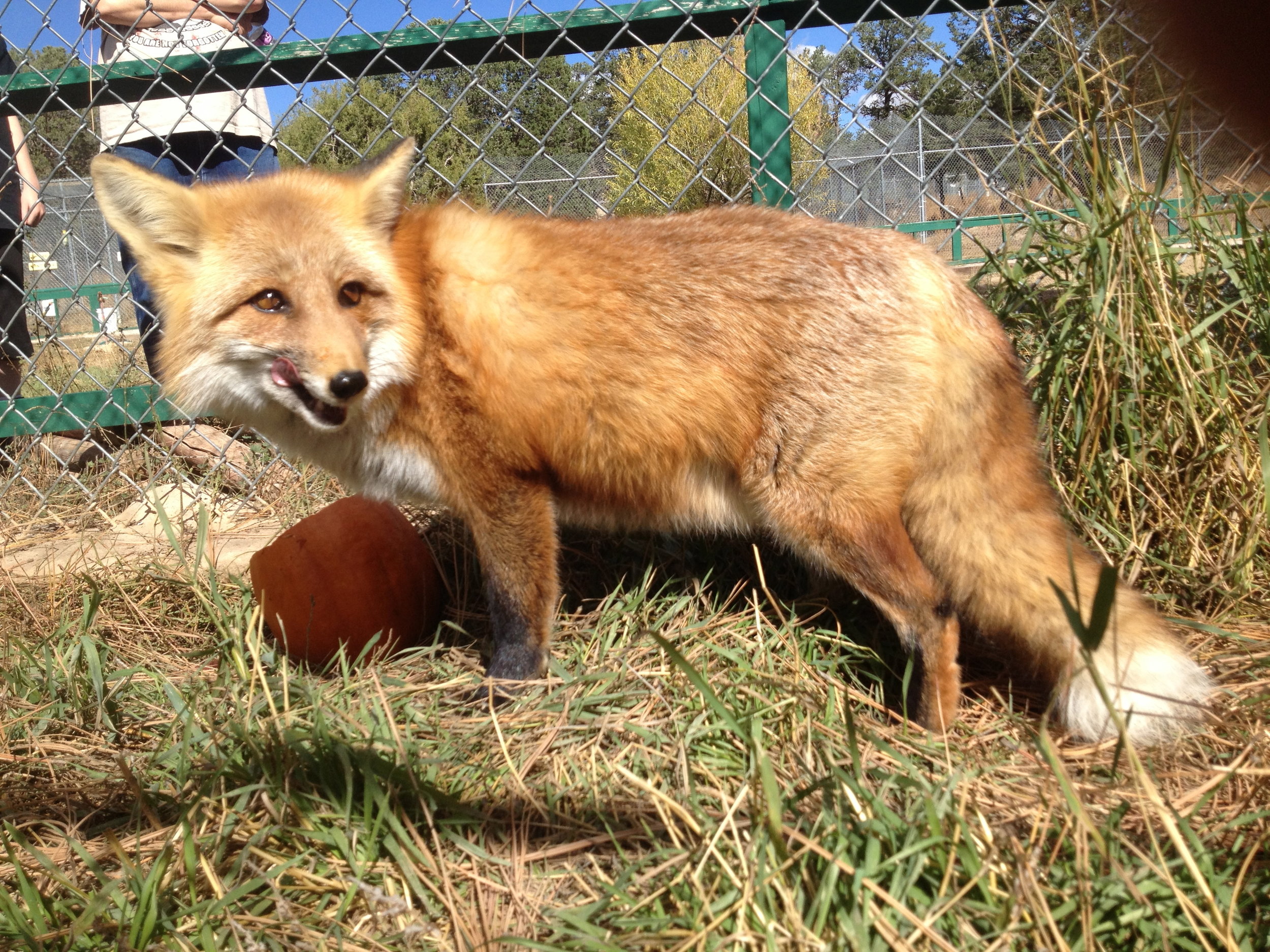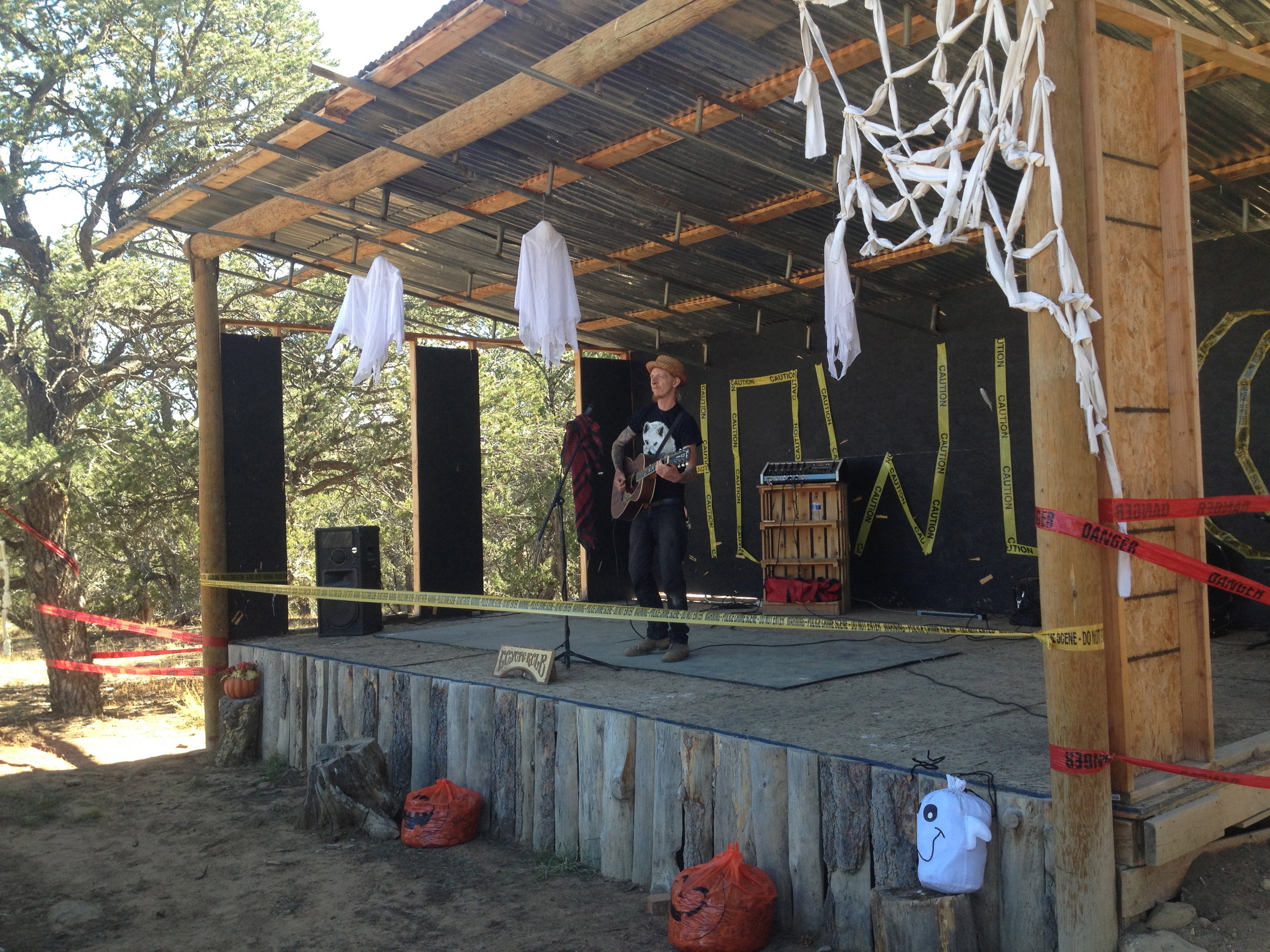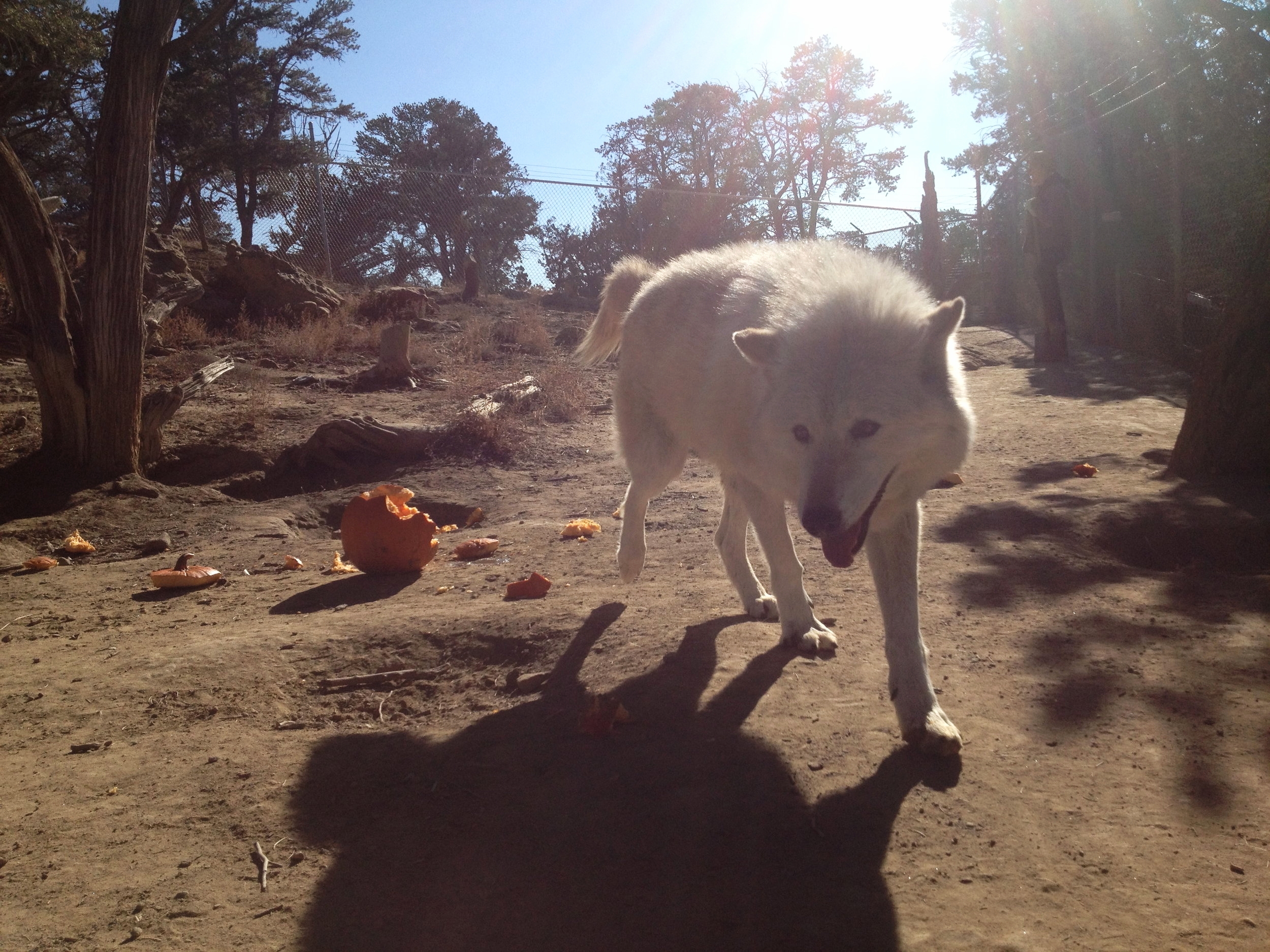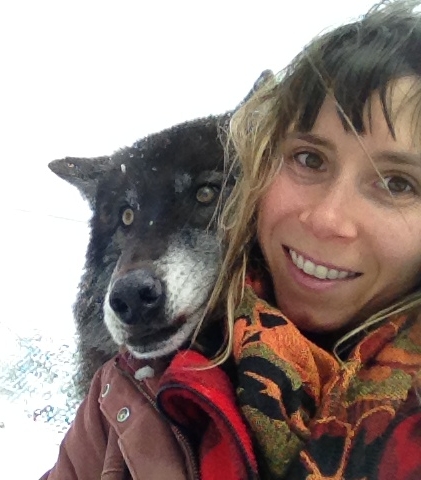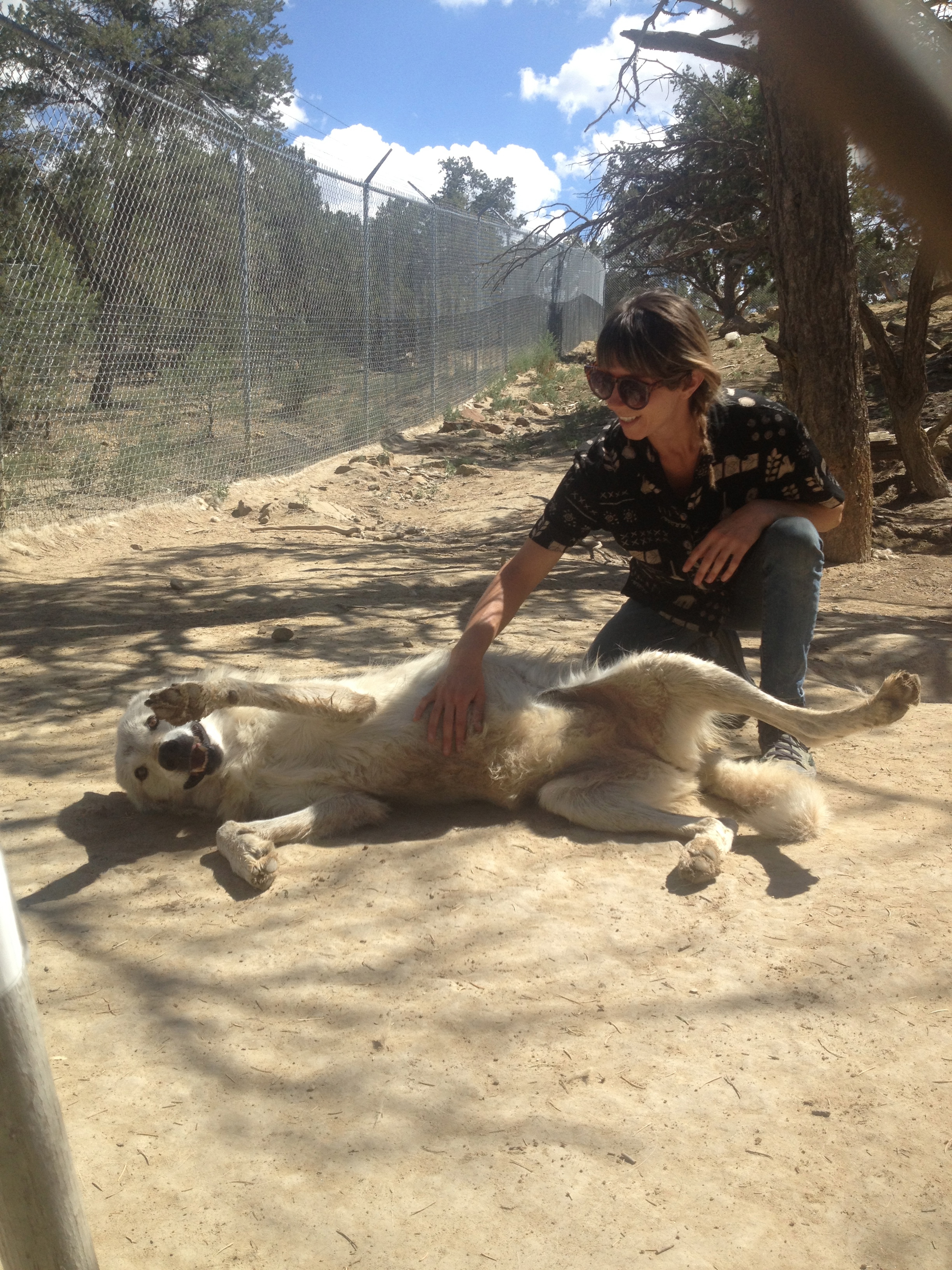Two Nikki’s: Nikki getting ready to feed high-content wolf-dogs, Nikki and Maki.
After giving and receiving gifts, nothing says “Christmas” quite like sitting down to a delicious feast with those you love. What will you be cooking up this holiday? At Wild Spirit Wolf Sanctuary, a refuge for wild canines rescued from the exotic pet trade, employees get into the spirit by serving up hundreds of pounds of raw meat to animals in need.
Nikki hand feeding Arctic wolf siblings Thunder and Alice.
As staff members at WSWS, we woke up early on a white Christmas in 2016 to feed 70 wolves, wolf-dogs, and other wild canines. The morning was bright and beautiful, with deep snow, happy wolves, and an ATV filled with over 200 pounds of meat. Accompanied by two of the sanctuary’s volunteers, we delivered meals to each of the sanctuary’s residents.
WSWS’s rescues typically receive 3-5 pounds of food per feeding five days a week to replicate a natural diet (wolves in the wild can only eat when they catch food, making periods of fasting perfectly normal for them). While most rescues eat frozen meat loaves, some have special diets and feeding arrangements depending on their nutritional and behavioral needs.
Nikki separating high-content wolf-dog, Forest, from Thunder and Alice for safe feeding.
Feeding and fasting days at the sanctuary are the same every week, providing the rescues with a sense of routine. And with the holiday falling on a feeding day, we were happy to help spread some Christmas cheer! Feeding all 70 rescues was a large task for just four people, but the serenity of the snow covered sanctuary on Christmas morning filled us with merriment and joy.
Forest eating while Thunder and Alice eagerly await their breakfast.

